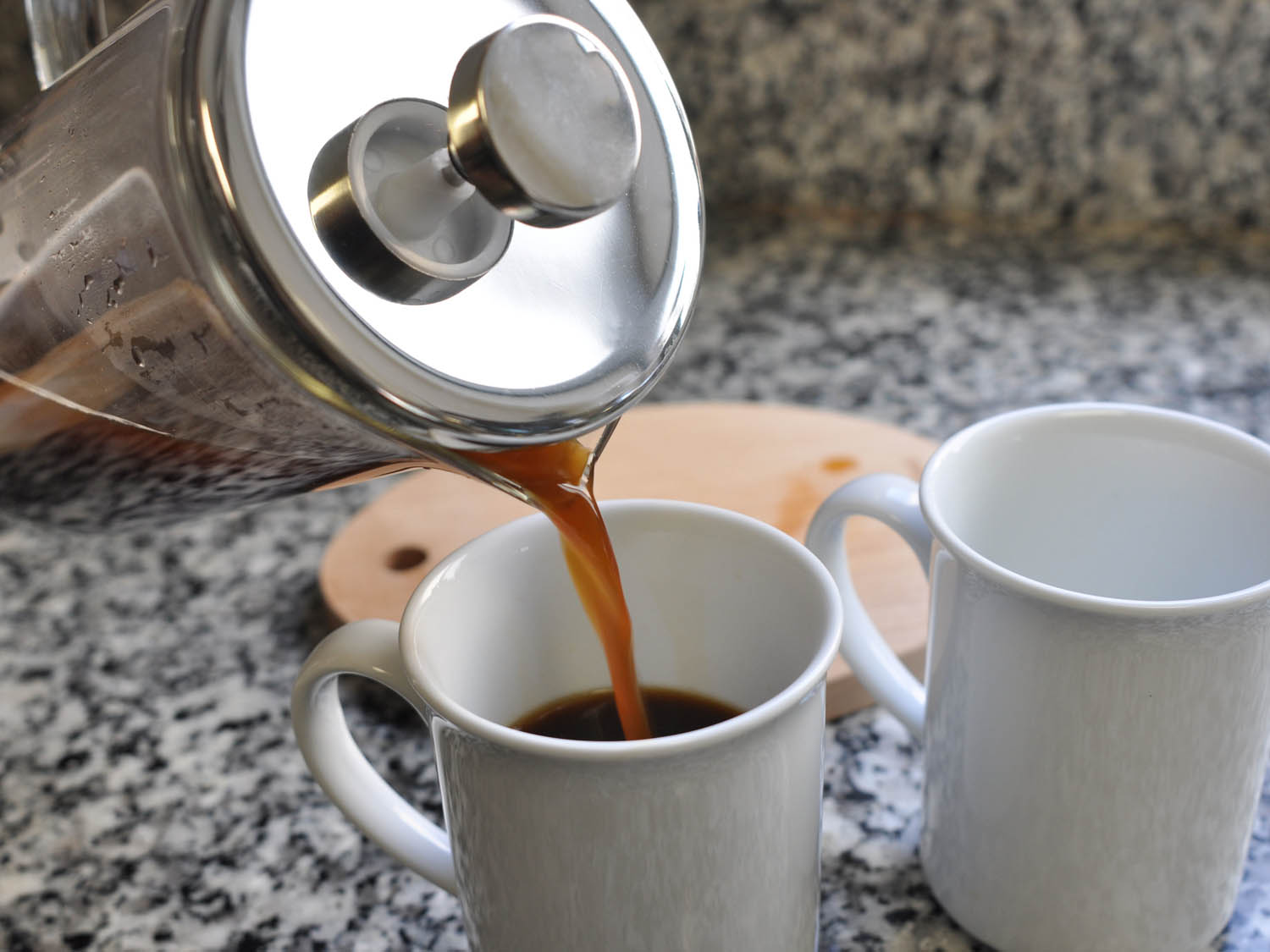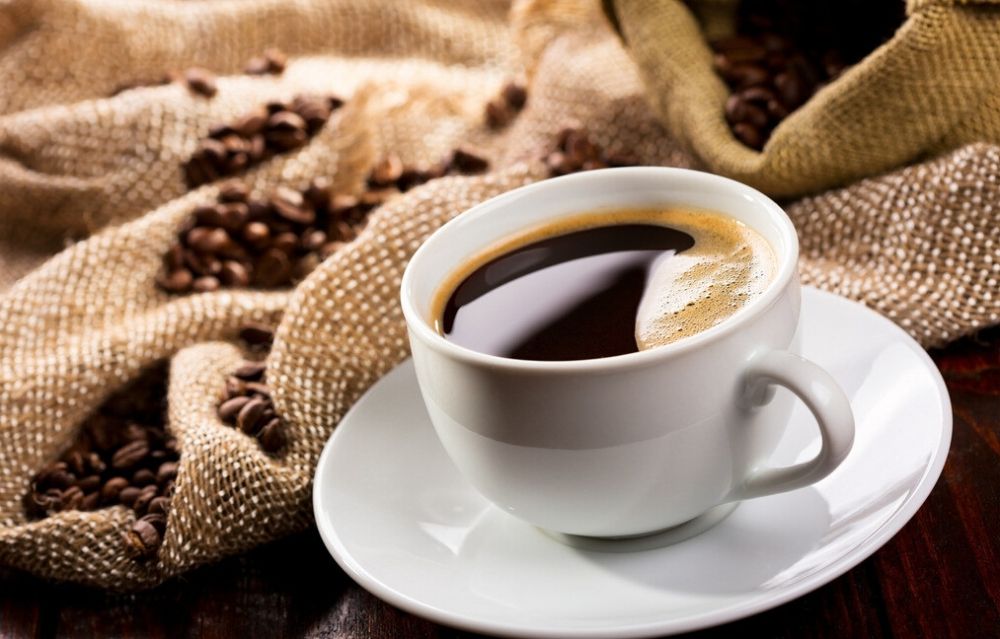Coffee making: how to make perfect French Coffee at Home
Follow the caf é (Wechat official account vdailycom) and found that Beautiful Cafe opened a small shop of its own.
Pressing the kettle is ordinary but extraordinary. The French kettle is like Man 2 in the movie. Although the heroine is attracted by the glamorous male 1, she doesn't realize that male 2 is actually the one. The French press does not have any high technology or luxurious appearance, but the quality of the coffee made from it is no less than that of any other coffee brewing equipment. Today, the protagonist of our discussion is the dharma kettle, which is simple in appearance and rich in connotation. First of all, let's get to know and understand the working principle of the pressure kettle.
The French kettle is called "French Press" (or "Cafetiere" or "Coffee Press") in English. It has a cylindrical appearance and is made of glass, plastic or stainless steel. A piston is arranged in the center of the lid, and one end of the piston is a metal filter, which is used to filter coffee powder with larger particles.
For most brewing devices, such as the hand drip filter coffee maker, the drip filter coffee maker and the Italian espresso machine, the total amount of coffee, the coefficient of grinding, the speed of water flow, the time of brewing and so on are all interrelated. Pull one shot and move the whole body. But the French kettle is an exception. You are free to control all the parameters such as the total amount of coffee, the degree of grinding, brewing time and so on, and the parameters do not affect each other. Of course, good coffee must have been deliberated over and over again, and so is the French kettle. However, compared with other brewing equipment, the pressure kettle is indeed more flexible. Maybe the name "Freedom Press" suits it better!
The method of making coffee remains the same. From my years of experience, I have summed up three major steps in coffee making: "Wetting", "Dissolution" and "Diffusion".
First of all, the step of "soaking" is essential. All the flavors and aromas we pursue are wrapped in that grain of coffee powder. Coffee produces a lot of carbon dioxide during roasting. Only when we are fully soaked can we completely release the carbon dioxide from the coffee powder and extract the essential elements. This process is called "Bloom".

Second, "dissolve", as the name implies, is to fully dissolve the chemicals contained in coffee in water. Finally, "soaking" separates the coffee solution from insoluble solids. "dissolution" and "immersion" are carried out almost at the same time, and the addition of the two is what we often call "Extraction". The reason I want to separate these two steps is to help people better understand the specific process of coffee brewing.
When making drip filter or hand drip filter coffee, people will constantly inject fresh hot water into the coffee powder. The significance of this is to continuously increase the intensity of extraction and improve the efficiency of brewing. But the problem is that the extraction intensity of coffee powder on the surface is much stronger than that of coffee powder in other parts, thus losing its original taste and aroma faster. In other words, the coffee powder on the surface is "overextracted (Overextracted)" long before the brewing is over. This will more or less affect the heaviest taste of coffee. Of course, everyone will encounter the same problem when dripping or hand-dripping coffee, but the difference is that professional baristas who are more skilled and more experienced can greatly control the impact of negative factors on coffee taste. in order to continuously improve the quality of coffee and taste balance.
For example, the process of making drip-filtered or hand-filtered coffee is more like a traditional oven, where heat is gradually transferred to the food (coffee powder) as the external temperature rises (hot water is injected). But when making French-pressed coffee, hot water is injected at one time rather than continuously. Although the intensity of the extraction can not be compared with the dripping coffee, but the overall extraction is more uniform. Because there are no problems such as over-extraction of surface coffee powder, French-pressed coffee has a fuller taste, sweeter taste and more mellow taste.
The metal strainer of the kettle can filter out most of the coffee particles, but still leave a small amount of very fine coffee powder. Don't worry, these fine powders suspended in the solution can help improve the alcohol thickness and taste of the coffee.
How to make perfect French coffee at home?
All right, having said so much, now let me introduce to you the method of making French-pressed coffee. As with all brewing methods, you need to experiment and adjust the brewing parameters over and over again, constantly adjusting the taste of the coffee. The good news is that French coffee has a higher fault tolerance rate than other brewing methods!
You need to prepare an alarm clock before you begin. You can also download clock applications on your phone.
Step 1: grind the coffee as thick as possible. It's okay to adjust the grinding parameters of the coffee mill to the thickest. Coffee powder should feel similar to crude salt or oatmeal. Record the grinding parameters for each time so that they can be adjusted next time. If the coffee is too light, grind it finer; if there are too many negative tastes, such as over-extraction, grind the coffee a little bit. How much coffee powder should I put in altogether? The answer is: there is no limit. I personally think the best gouache ratio is 60-70 grams of coffee powder per liter of water (1:16-1:14). You can adjust the amount of coffee powder according to your taste preference.
Step 2: clean the coffee pot and strainer. If you are using an ordinary single-layer filter, it can be used after the water is boiled; if it is a double-layer filter, please leave the water to boil for 30 seconds before starting to brew. If you are brewing deep-roasted or decaf coffee, the water temperature should be 10-15 ℉ below the boiling point.
Step 3: the clock begins. Start pouring water. When making French-pressed coffee, some people like to pour a small amount of water, stir it, and then pour in the remaining hot water. But I don't think it makes much sense. The key to making French coffee lies in how to dispose of it after pouring water. If you put the lid on immediately after you pour all the water in, your coffee will be extracted unevenly. This is because the carbon dioxide in the coffee is released and the coffee powder is held to the surface, and the coffee powder cannot be fully combined with water. Remember the "soaking" step I just said? The "wetting" step of French-pressed coffee is not complicated. All you need to do is stir gently after pouring the water at once and let it stand for 30-45 seconds. When the coffee powder starts to sink to the bottom, you can close the lid.
Step 4: with regard to the brewing time, my principle is: 6-8 minutes. What? Shouldn't it be 3-4 minutes? You can also choose 3-4 minutes, but the coffee powder must be fine enough to ensure the final quality of the coffee. But if you do this, you will not be able to understand the essence of French coffee. Don't worry, make the coffee powder thicker and take longer. After 6-8 minutes, your coffee will be delicious.
Step 5: when the time is up, you can begin the final suppression. As I said, the process of making French coffee must be slow and elegant enough. If you press the piston hard and speed up the extraction process of the coffee, your coffee will become very bad and bitter. Press the piston gently and slowly. When you feel the downward pressure encounter resistance, pull the piston back 1-2 inches, and then continue the downward pressure. Once the strainer touches the bottom of the coffee pot, the coffee is ready.
Although the French-pressed coffee can still be preserved for some time after it is made, in order to ensure the highest quality of the coffee, you'd better pour out all the coffee after it is finished.
Important Notice :
前街咖啡 FrontStreet Coffee has moved to new addredd:
FrontStreet Coffee Address: 315,Donghua East Road,GuangZhou
Tel:020 38364473
- Prev

Coffee knowledge; seven factors affecting the flavor and aroma of coffee raw beans
Follow Kaiping (Wechat official account vdailycom) found that a good cup of coffee opened in a beautiful cafe depends on the quality of raw beans. As a coffee practitioner, we should open up the pattern and learn more about the whole link of "From Seed To Cup" as much as possible. This is helpful to the link you are engaged in. After all, bakers bake according to beans, while coffee
- Next

Coffee phenomenon: who changes coffee from solid to liquid
Following Cafe Review (official Wechat account vdailycom) found that the Beautiful Cafe opened a small shop of its own watching the owner demonstratively put a handful of raw beans, after roasting, grinding, cooking, and finally into a cup, indulging in the process of coffee changing from solid to liquid, and the formation of this phenomenon, or the achievement of this art, should be coffee equipment. Roasting tools make coffee
Related
- What is the meaning of lactic acid fermentation with coffee bean treatment?
- How to judge the state of foam by sound?
- How does the latte pull out the unicorn pattern? Come to get for a little trick to improve the flower pull!
- Will flower pulling affect the taste of the latte?
- Do you know the history of coffee?
- The difference between honey treatment and sun washing what is raisin honey treatment?
- What kind of milk can a novice use to make coffee foam to keep the foam longer? The correct method and skills of milking tutorial sharing
- Why do washed coffee beans taste sour? Flavor characteristics of washed Coffee
- Introduction to the skill of how to practice the size and height of water injection around the circle of hand-brewed coffee
- How do beginners practice coffee flower drawing from scratch?

